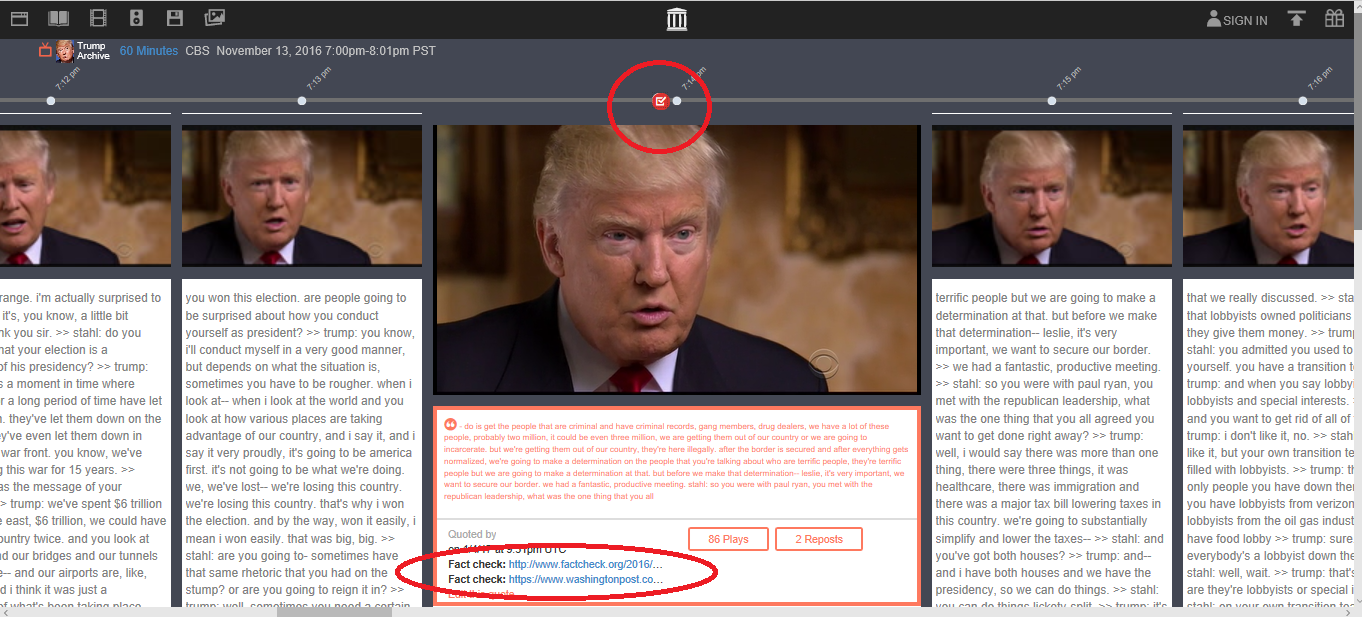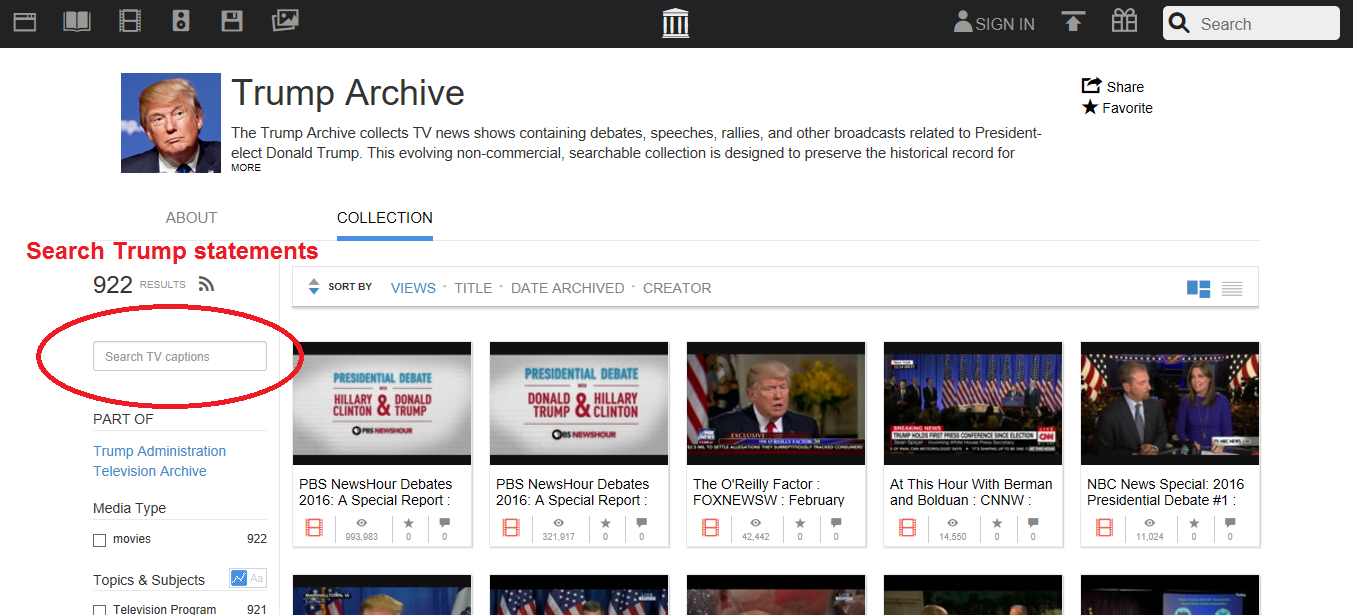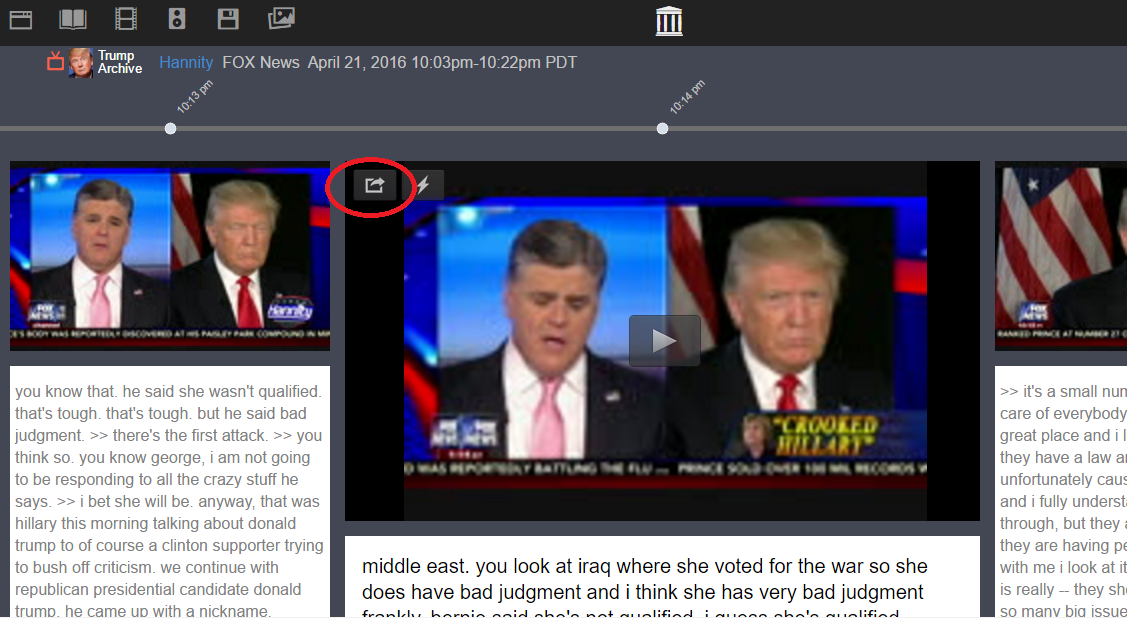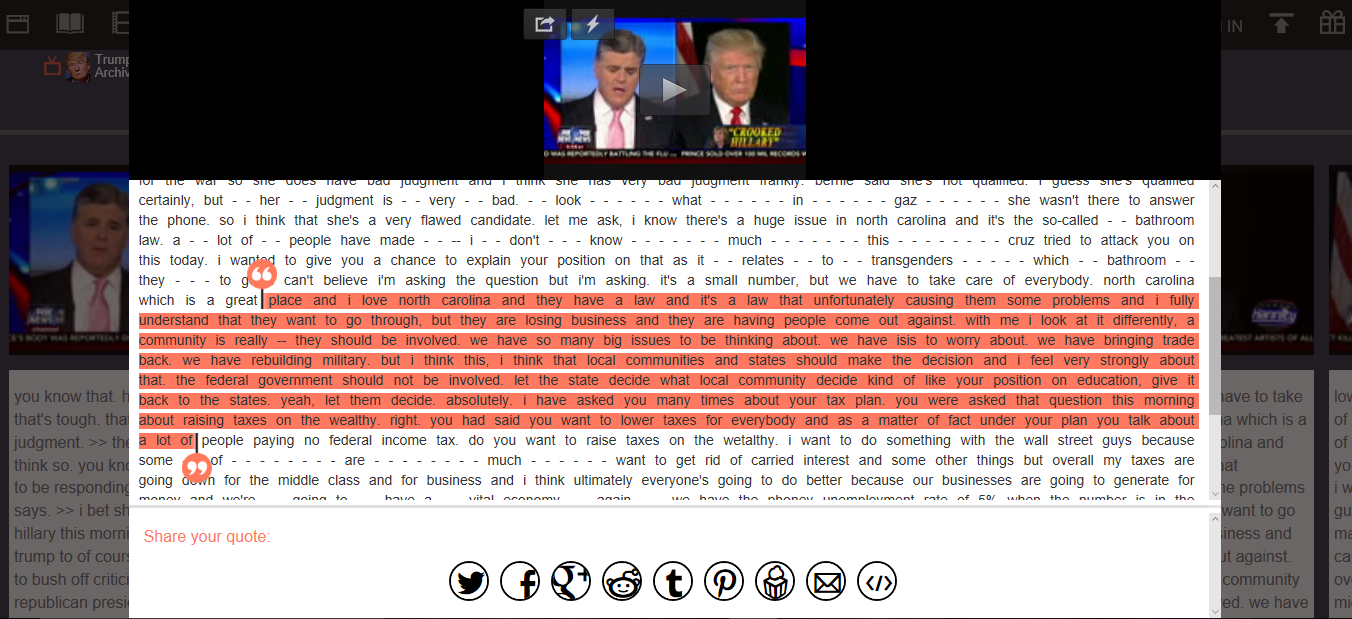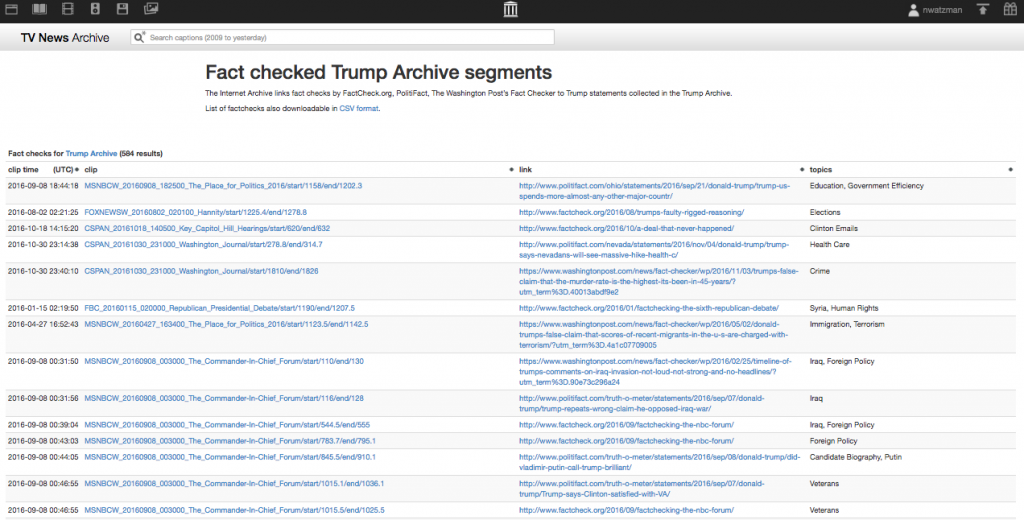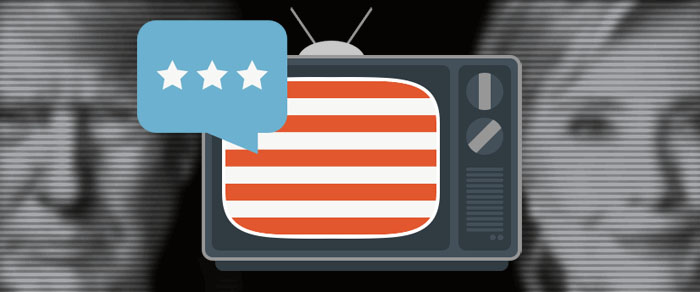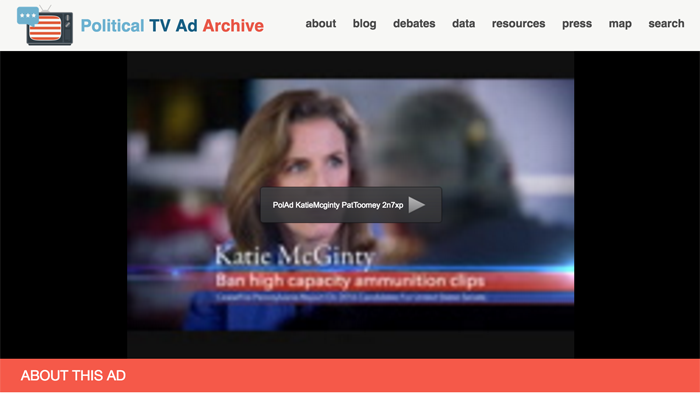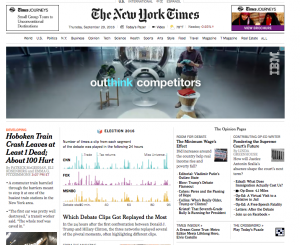by Katie Dahl
President Donald Trump addressed Congress for the first time this week and the Democratic National Committee elected a new chair, Thomas Perez. Here are five claims our fact-checking partners examined this week, paired with corresponding clips from the Trump Archive and the TV News Archive.
Claim: Trump wants to eliminate overtime pay for people (mostly false)
In an interview on NBC’s Meet the Press, newly elected Democratic National Committee Chair Thomas Perez said, “Donald Trump wants to eliminate overtime pay for people.” PolitiFact’s Allison Graves hadn’t heard that one before, so she looked into it and found that while Trump “has not talked about eliminating overtime pay, he has supported rolling back an Obama-era regulation that would expand the number of people eligible for overtime.” Robert Farley from FactCheck.org confirmed with the DNC’s press office that “Perez was referring to the overtime rule proposed by President Barack Obama (while Perez was the labor secretary), and the possibility that Trump may squash it.” But Farley says “[v]iewers of NBC’s Meet the Press on Feb. 26 were left with the false impression from Perez that Trump wants to do away with federal overtime pay requirements altogether. And there is no evidence Trump wants to do that.”
Claim: Murder rate increase fastest in nearly half century (basically correct)
In his first address to Congress, President Trump claimed that the 2015 murder rate “experienced its largest single-year increase in nearly half a century,” and that in “Chicago, more than 4,000 people were shot last year alone.” Louis Jacobson and Amy Sherman found for PolitiFact that “FBI data shows a clear spike in homicides between 2014 and 2015–a 10.8 percent increase. This does rank as the biggest year-to-year jump in murders since 1970-71, when the number rose by 11.1 percent.” The Washington Post fact-checkers Glenn Kessler and Michelle Ye Hee Lee agreed, but wrote “overall, violent crime is on a decades-long decline… This is why criminologists do not make generalizations about crime trends based on short-term comparisons of rates, such as annual or monthly changes.” FactCheck.org’s Farley reported similar data, saying the murder rate “did go up by 10.8 percent from 2014 to 2015, the long-term trend has been a decrease in murders. The 2015 rate, 4.9 per 100,000 people, is less than half the peak rate of 10.2 in 1980, according to FBI data.” Trump’s Chicago statistics are also correct, say Jacobson and Sherman. According “to data released by the Chicago Police Department shortly after the close of 2016, the city had 762 murders, 3,550 shooting incidents, and 4,331 shooting victims in 2016.”
Claim: NATO partners aren’t meeting their financial obligations (true)
Continuing a familiar campaign talking point, President Trump said that our NATO partners “must meet their financial obligations,” and went on to claim that because of his “very strong and frank discussions… the money is pouring in.” Jacobson and Sherman found that yes “only a handful of NATO’s 28 members have fulfilled the pledge to spend at least 2 percent of their economy on defense — Great Britain, the United States, Greece and Estonia.” Kessler and Lee, though, wrote that the comment about the money pouring in is a “bit nonsensical,” presumably because “the money would not be going to the United States or even necessarily to NATO; this is money that countries would spend to bolster their own military forces.”
Claim: Defense budget one of the biggest increases in history (mostly false)
In touting his budget proposal, President Trump said it “calls for one of the largest increases in national defense spending in American history.” Sherman and Jacobson looked at just the last 30 years and found “there have been 10 years when the base defense budget has gone up by more than what Trump has requested. In some years, the increase was more than double Trump’s.” The defense analysts they talked with “confirmed that while the proposal is a significant increase, it is not remarkable.” They rated the statement Mostly False.
Claim: We’ve spent $6 trillion dollars in the Middle East (not correct)
President Trump told Congress that “America has spent approximately $6 trillion dollars in the Middle East,” but fact-checkers indicate he’s off by some trillions. Robert Farley reported the number is $1.7 trillion: “In a report released this month, the nonpartisan Congressional Research Service said that the Department of Defense estimates that the U.S. has spent $1.7 trillion on ‘war-related activities’ from 2001 through Sept. 30, 2016. That includes military operations in Iraq, Afghanistan, Syria and Libya.” The PolitiFact reporters wrote “he is confusing money that’s been spent with money that researchers say will be spent,” and The Washington Post’s agreed, writing the “$6 trillion figure adds in estimates of future spending, such as interest on the debt and veterans care for the next three decades.”
Read here about tips to use the Trump Archive. To receive the TV News Archive’s email newsletter, subscribe here.

